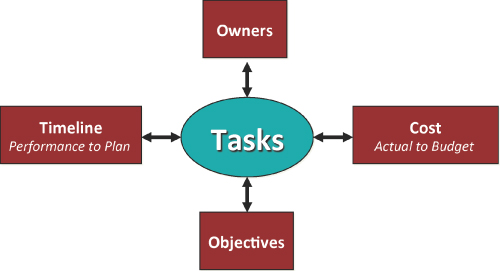Chapter 4
A Traditional Project
Five Essential Parts of a Project
The Project Management Institute provides a 5-by-9 construct for thinking about projects—42 separate processes are each aligned with one of five process groups and one of nine knowledge areas. The Harvard Pocket Mentor outlines a simpler approach by proposing four phases for every project. Our experience is that every traditional project has five essential parts:
- Tasks: the how
- Objectives: the what and the why
- Timeline: the when
- Cost: the how much
- Owners: the who
Communicating each element is necessary, which is why we have used these traditional elements as the structure of the one-page project manager (OPPM). (See Figure 4.1.)
Let's look at these five elements in more detail:
Get The New One-Page Project Manager: Communicate and Manage Any Project With A Single Sheet of Paper, 2nd Edition now with the O’Reilly learning platform.
O’Reilly members experience books, live events, courses curated by job role, and more from O’Reilly and nearly 200 top publishers.


